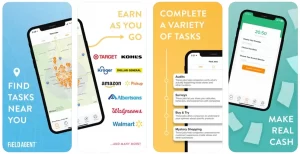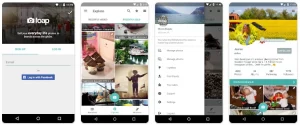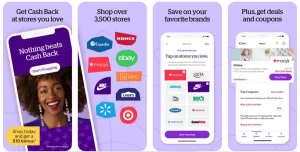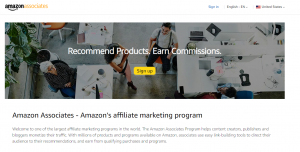What is Email Marketing?
Customers on your email list can be informed about new products, deals, and other services through email marketing. Educating your audience about the benefits of your brand or maintaining their interest in between transactions can also be a more subtle way to market. Anything in between is also an option.
There’s no denying the influence that a well-crafted message can have on your customers, not to mention the impact CRM and lead nurturing can have. Today, we are overwhelmed with email marketing campaigns, and yes, some of it still feels spammy.
To interact with your audience and promote your brand and boost sales, use email marketing. Emails can be used for a variety of purposes, including selling products, sharing news, lowering cart abandonment rates, and telling stories.
Where did Email Marketing begin?
Depending on your source, Ray Tomlinson sent the first email in 1971 or 1978, ushering in the contemporary era of communication. The message was unremarkable—just a string of numbers and letters that appeared more like a password than a communication—but it was profound in its significance.
The email was transmitted from one computer to another through a system of machines like the current internet. Additionally, Tomlinson invented the “@” sign for use in email addresses.
Years later, Gary Thuerk, a marketing manager at Digital Equipment Corp, sent the first promotional email to a list of email addresses. Email marketing was therefore born. Even though there were just a few hundred persons on the list, Thuerk was nevertheless able to lay claim to the title of “Father of Spam.”

3 Important Types of Email Marketing
I will highlight three important types of email marketing that you can use to earn the attention of your customers and prospects.
1. Email Newsletters
A one-time communication, the email newsletter can be used to distribute promotional messages, crucial account information, product updates, and more. An effective email newsletter will aid in increasing brand awareness and recognition.
It’s crucial to take into account a number of elements when writing an email newsletter, including:
- Content length
- Type of information
- Placement of images and text
- Design
- Call to Action
Because every audience is different, it’s crucial to try out several forms.
2. Transactional Emails
Transactional emails include invoices, bills, billing statements, and order confirmation emails. They are brought on by user activity.
It offers a great opportunity to redirect a regular email to your website. For instance, email receipts have high open and click rates.
Types of Transactional Emails
- Order confirmation emails – An order confirmation is one of the most typical examples of a transactional email. Customers are informed of the specifics of the transaction, the goods, and its shipment through these confirmations.
- Shipping notification emails – Customers receive shipping notice emails when their order has been shipped, giving them assurance that it is on its way. Customers can know when to expect their order by being given tracking information (or a link to track their purchase), which enables them to make arrangements to be home to accept it.
- Delivery confirmation emails – Delivery emails, like shipping confirmation emails, are a great way to gain momentum by boosting enthusiasm and pleasure for the most recent purchase. When a consumer receives a delivery confirmation email but the goods isn’t there, they can contact the business and report the issue. This transactional email ensures that the purchased item gets into the appropriate hands.
- Double opt-in emails – Double opt-in emails request consent to receive your emails from new subscribers (or other messages). Sending a double opt-in email confirms that the subscriber owns the email address, which can reduce spam and increase email deliverability.
- Password reset emails – To guarantee that clients always have access to your product, password reset emails are crucial. Even while the email for password resets is highly practical, it doesn’t imply it has to be uninteresting.
- Legal update email – Transactional emails can be used to notify clients about material amendments to contracts and other agreements, such as a revision to a company’s Terms of Service.
- Invoice emails – An email invoice is a transactional message that notifies customers of an upcoming payment.
3. Behavioral Emails
Emails that are tailored to a user’s behavior are known as behavioral emails.
Personalization is what behavioral email essentially comes down to. You may customize your emails to be pertinent to where clients are in the purchase cycle by getting to know your customers and developing buyer personas.
Here’s a list of 10 types of behavioral emails you can automate:
- Welcome/Onboarding
- Browse abandonment
- Recommendations
- Product review requests
- Replenishment/re-orders
- Password renewal/reminders
- Free Trial expiry
- Cross-selling
- Purchase anniversary renewals
- Re-engagement

Benefits of Email Marketing
1. Creating personalized content.
You may produce customized content and tailor your efforts with email marketing.
As simple as inserting a contact’s name in the email qualifies as personalization. In actuality, emails with the recipient’s first name in the subject line receive more clicks than ones without it.
In contrast, you may also develop customized content based on audience segmentation to send the appropriate emails to the appropriate clients. For instance, you might want to send one email marketing campaign to clients who buy from you frequently and another to new customers.
2. Collecting feedback and surveys.
If you want customers to interact, engage, and buy from your business in the future, keeping an eye on their experience is crucial.
You can achieve this by using email marketing. For instance, you can use email campaigns to distribute customer satisfaction surveys and get feedback from your customers.
In actuality, this is among the best methods for determining your Net Promoter Score (NPS). You can use this score to determine the proportion of customers who support the brand and those who don’t. You can develop methods to enhance your customer experience using the information provided.
3. Improving sales.
Email marketing can actually increase your revenue in addition to being a great marketing tool.
In fact, 59% of marketers cite email as their top source of ROI, and those who deployed segmented marketing report revenue increases of up to 760%.
Email marketing campaigns can promote goods or services, persuade customers to make a purchase after leaving items in their shopping cart, or send customers exclusive deals.
Additionally, according to 59% of poll participants, marketing emails have an impact on their purchasing decisions.
Your email marketing campaigns can simply include messages that persuade customers to buy from you as they have opted-in to receive your messages and updates.
4. Communicating with your audience.
It’s crucial for marketers to always work to enhance audience communication. They are more inclined to stick with your brand if they feel comfortable approaching you.
Just consider how much people value quality emails. Consider your most recent marketing email from a company you adore. Was it disruptive, or did you appreciate reading the most recent headlines? If the brand is one you like, you probably loved the experience and it helped you stay in contact with it.
5. Generating traffic to your site.
How do you get outstanding content to your audience once you’ve created it? You probably send them an email.
You may increase your SEO and drive visitors to your website with email marketing campaigns. Additionally, you’ll retain visitors interested in your website and business.
For instance, many of you may have found this page through a HubSpot marketing email. This is so since providing our information through emails to our audience is a fantastic approach to add value and increase traffic.
Each email you create with a link to your content should have a call to action (CTA) so that readers can click through to your website.
6. Sending timely campaigns.
Traditional marketing efforts have a time and place, but planning and organizing them can take months. Even then, it’s doubtful that your campaign materials will be seen by the proper audience at the appropriate time.
However, since email marketing campaigns don’t require as much planning, you can start one entirely on short notice. Furthermore, you can guarantee that your audience receives the email at the appropriate moment.
7. Reaching the right people at the right time.
You need to be in front of the appropriate customers at the right moment if you want your marketing effort to be effective. Yes, I’m making this point again because it’s so crucial.
People are considerably easier to contact with email marketing because they often check their inboxes. Any marketing effort can succeed if people can access it at any time and on a variety of devices.
This implies that you frequently interact with your audience, keeping your name in their minds.
8. Producing cost-effective campaigns.
Email marketing efforts are typically more cost-effective than more conventional campaigns like direct mail or print.
You won’t be required to pay for any photo shoots, location costs, printers, postage, or placement, for instance. Only a copywriter and graphic designer are required (assuming you aren’t utilizing stock photos). Even one member of your team could do this.
Email campaigns can be created quickly as well. You can create an email in a day if necessary, which is much more economically efficient than the time it takes to create a direct mail or print campaign.
Since marketers are constantly constrained by time and financial resources, email marketing efforts can be more effective while also producing leads and income.
9. Increasing leads.
Along the same lines as boosting revenue, email marketing can also help you generate more prospects. In reality, the inbound approach makes use of email marketing to nurture prospects and boost conversions.
Let’s imagine, for illustration, that you downloaded a lead magnet from a website. You start receiving drip emails after that, and eventually you decide to schedule a demo to understand more. You recently switched from a MQL to an SQL, increasing the quantity of qualifying leads the marketing team provides the sales team.
To prevent your sales staff from wasting time on unqualified prospects, email marketing campaigns can further qualify leads. Additionally, if your business uses lead scoring, you can monitor which leads read your emails and engage with them by clicking the links in them.
10. Providing more value to your audience.
Adding value for your audience is one of the key objectives of any business in order to keep them coming back.
Because you can provide value even when clients aren’t making purchases, email marketing is a terrific way to develop devoted customers.
You may also utilize email marketing to offer extra resources to contacts who are interested in what you have to say since customers or prospects opted-in.
More people will pay attention if you consistently give your audience value, and your ROI will increase.
11. Owning your media and contact lists.
You don’t own your contact list or even the content you put on platforms like social media. Typically, the social media network owns both your follower list and your content.
If social media disappeared tomorrow, how many fans and clients would you lose?
Building an email list is crucial for marketers because of this. You own this contact list, so you can communicate with everyone on it independent of your email provider. Additionally, you will own the content that you create and distribute.
12. Having a forum for self-promotion.
Self-promotion might occasionally feel odd in settings where potential customers haven’t necessarily chosen to receive information about your company. However, one of the finest ways to attract clients is by self-promotion. Nobody will buy from you if you can’t sell your business and market yourself.
You’ll always have a means to advertise yourself with email marketing campaigns, especially if customers opted-in. You can email people about brand-new goods, their features and advantages, or fresh material. This self-promotion is neither undesired nor disruptive because customers want to hear from you.
Growing Your Email List
The majority of people place an optin form on their website and wait for people to sign up when they want to grow an email list. Sadly, this tactic frequently fails to provide the desired results.
You need to draw them in with an alluring offer if you want to expand your email list. A lead magnet is required.
What is a Lead Magnet?
In exchange for an email address, you can give away something great as a lead magnet, often known as an optin bribe. The majority of lead magnets are digital resources like PDFs, MP3 audio files, or movies that you can make yourself at little to no expense. It doesn’t have to cost you anything to create them.
As long as it offers value to your visitors for no cost, it can be anything you desire.
Typical examples of lead magnets include:
- ebooks
- A cheat sheet of tips or resources
- White papers or case studies
- A webinar
- Free trials or samples
- A free quote or consultation
- Quizzes or a self-assessment
- A coupon
The possibilities are endless!
What Makes a Good Lead Magnet?
You are well aware that a lead magnet must offer something of value for nothing. However, if you want your lead magnet to be very successful, you need take into account the following 5 factors:
1. Easily consumed: Delivering a 300-page manifesto won’t help you achieve momentum since lead magnets are only useful when the audience uses them.
2. Actionable: Lead magnets must offer your audience a practical tool, skill set, or piece of information that they can use.
3. Creates noticeable improvement: If a product or service is effective, people will continue to purchase it. If your lead magnet is as worthwhile as your goods and services, it will be successful.
4. Relevant: Finding a lead magnet topic that solves difficulties won’t be difficult if you’ve done your research on your prospects.
5. Immediately available: People love instant gratification, so give it to them right then and there.
Create an Optin Form that Converts
Your optin form’s objective is to make your lead magnet’s significant benefits clear so that website visitors will sign up for your email newsletters in exchange for receiving the lead magnet.
The following elements must be present in an opt-in form for it to convert:
1. Enticing headline: Make sure your title expresses your lead magnet’s main selling point properly.
2. Helpful description: Is your description succinct, explicit, and direct? To make it easier for the reader to swiftly skim what they will read, use bullet points.
3. Attractive visuals: If you can, upload a picture of the lead magnet (like a mockup of your eBook). Another excellent approach to increase conversions is to include a picture of a person gazing at the optin form. You may produce stunning visuals with the aid of our wonderful assortment of visual content production tools.
4. Simple form: Attempt to limit your request to a first name and email address. If you ask for too much information too quickly, your conversions will suffer.
5. Compelling subscribe button: To ensure that your subscribe button stands out on the page, utilize a contrasting color. Use non-generic email copy that begs recipients to click immediately, such as (“Send me the 9 steps!”)
Installing your optin form on your website is required after creating it. There are 14 locations where your opt-in form will convert well:
- Splash page
- Welcome gate
- Floating bar
- Your site’s header
- Blog archive page
- Within your blog posts
- Your sidebar
- In a timed lightbox popup
- In a scroll box
- Your footer
- Your About page
- Resource pages
- On a designated sign-up page
- In an exit-intent® popup
If you want to obtain as many subscribers as you can, one of these is a must. That popup has an exit-intent®.
As soon as a user is going to leave your website, an exit-intent® popup appears. This popup only appears when the user is about to leave and doesn’t interfere with reading. Given that they have probably read your content and found your site useful, now is the ideal opportunity to ask them to subscribe.
Best Email Marketing Services
Providers of email services take care of all the legalities and pricey complexities involved. Simply sign up and use their service is all that is required.
Here are the best email marketing services that I personally recommend:
1. Sendinblue

In addition to offering comprehensive email marketing tools for organizations, Sendinblue also offers SMS marketing tools. Additionally, you can use drag and drop tools on an intuitive marketing platform to construct automated workflows, segment consumers, and create emails that are incredibly engaging.
With Sendinblue’s branding, you may send up to 300 emails daily without paying a cent. Paid plans begin at $25 per month, and you can add SMS for a fee dependent on your sending requirements.
2. HubSpot

Although HubSpot’s CRM platform is well-known, they also provide potent email marketing tools for small businesses. Without the aid of a designer, you can simply generate stunning emails using the drag and drop editor and pre-made themes. A/B testing, customisation options, and other capabilities are included in the software.
With HubSpot, you are able to send up to 2,000 emails without paying anything. You can upgrade to a premium subscription starting at $45 per month if you want to send more emails and get rid of the HubSpot branding.
3. Constant Contact

One of the biggest and most effective email marketing systems in the world is Constant Contact. You may use templates and drag-and-drop editing tools to create professional email designs and manage your subscriber list.
You can try ConstantContact for free for 60 days. After that plans start at $20/month.
4. Drip

With the aid of the marketing automation application Drip, users may construct intricate email automation processes and conditional statements for usage in email messages. The organization of campaigns, workflows, and triggers is excellent, and Drip can be made as simple or sophisticated as you require.
The Basic and Pro Drip subscriptions each include a 14-day trial period and start at $49/month for up to 2,500 subscribers and $99/month for up to 5,000 subscribers, respectively. Get a quotation is required for enterprise users (5,000+ members).
5. ConvertKit

ConvertKit is a great option if you’re just getting started but anticipate using more sophisticated capabilities later on, such complex autoresponders (which you can simply create using ConvertKit Tags + OptinMonster). It resembles a CRM tool in some ways, but without the high cost.
Professional writers, speakers, and bloggers are the target audience for ConvertKit.
Prices start at $29 per month for the first 1,000 customers and increase gradually after that.
6. Mailchimp

A well-known email marketing tool is Mailchimp. It is excellent for those who are just getting started because it is simple to set up and has a user-friendly interface.
The finest free email marketing solution is Mailchimp because it offers a free plan for up to 2,000 subscribers.
However, you will need to upgrade to a paid account if you wish to use autoresponders or any other potent features. Paid subscriptions can cost as little as $10 per month for 2,500 members or as much as $30. The length of your list will determine how much you pay.
7. MailerLite

You can build responsive emails and autoresponders with built-in A/B testing using MailerLite. Additionally, you can send targeted emails to particular subscribers.
For a list size of up to 1,000 members, you can get started for nothing.
You can also have a look at ActiveCampaign or HubSpot, which are comprehensive marketing tool suites, in addition to the above-mentioned service providers.
You are prepared to start growing your email list and generating sales as soon as your optin form and email marketing provider are set up.
FAQs (Frequently Asked Questions) About Email Marketing
The most typical queries about email marketing are listed here. Some of this information has already been covered in this post, however it is provided here for our convenience.
Keep checking back because we’ll definitely be updating this FAQ.
How do I build an strategy following email marketing best practices?
We recommend that you use this guidance to create the best email marketing strategy possible. You should absolutely read our excellent post on how to execute an effective email marketing campaign as well. This is what you’ll discover:
- Set a goal for your email campaign
- Decide on the types of email you’ll send
- Choose your audience segments
- Select the right technology
- Create eye-catching optins
- Plan emails and followups
- Craft the perfect subject line
- Write your email marketing copy
- Design your email
- Test and track your email campaign
How often should I send marketing emails?
There isn’t a set frequency for sending marketing emails, so we advise asking your subscribers how frequently they would want to hear from you. You can also run some A/B testing to determine which frequency performs the best.
In general, you should communicate with newer subscribers more frequently because they are only getting to know you. Beyond that, though, just send emails according to your specified timetable.
When should I send marketing emails?
Another aspect that depends greatly on your list is timing. Try several things and see what works best for your subscribers, is what we advise. Google Analytics can help you determine when your subscribers are most active so you can send emails during that period.
What email metrics should I track?
The top 3 metrics to track for email marketing are:
- Deliverability. Your email deliverability rate is the number of emails that made it successfully to the target recipient’s inbox.
- Open Rate. The open rate shows the number of recipients who opened your email.
- Click-Through Rate. The click-through rate shows the percentage of subscribers who clicked a link in your email (usually to a landing page on your website).
What is the difference between single opt-in and double opt-in?
When a visitor hits “subscribe,” they are added to your list via single opt-in.
Double opt-in requires users to click “subscribe” and then click a link in a confirmation email or other transactional email sent to the email address they gave in order to verify that they actually wanted to subscribe.
See our article on double opt-in vs. single opt-in: which is better for conversions for more information and advice.
Should I be sending email newsletters?
Absolutely! Email newsletters are sent by more than 83% of business-to-business (B2B) marketers as a component of their content marketing strategy. Email newsletters are a crucial component of any email marketing plan as they are a very cost-effective way for firms to engage with their customers.




























